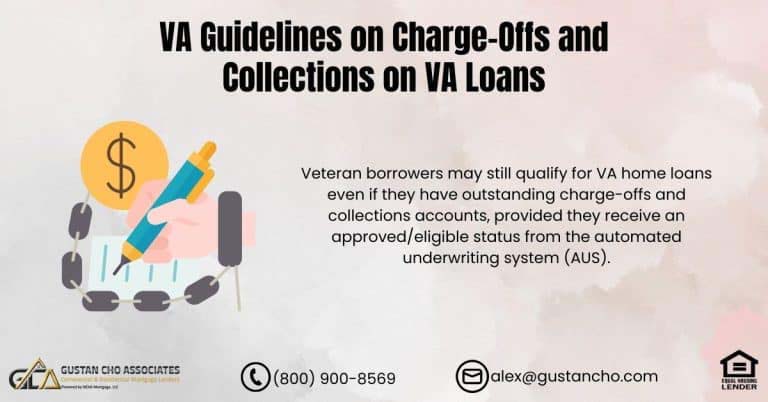In this guide, we will cover front-end debt-to-income ratios mortgage guidelines. There are two different types of debt-to- income ratios:
- Front-End Debt-to-Income Ratios
- Back-End Debt-to-Income Ratios
A homeowner’s monthly mortgage payment consists of the following and is called P.I.T.I.
- Principal
- Interest
- Property Taxes
- Homeowners Insurance
The above is called P.I.T.I. However, many borrowers have other expenses as part of their monthly housing expenses. Front End DTI includes the housing monthly payment divided by the borrower’s gross monthly income. In this article, we will cover and discuss the importance of debt-to-income ratios.
Factors That Affect Front-End Debt-to-Income Ratios
Besides the Principal, Interest, Taxes, and Insurance, other factors that are part of the front end DTI are the following:
- Monthly mortgage insurance if applicable
- Homeowners Association Dues if applicable
Mortgage Insurance is mandatory on conventional loan programs where borrowers put less than 20% down payment.
- HUD requires a one time upfront FHA Mortgage Insurance Premium and annual FHA Mortgage Insurance Premium for the life of a 30 year fixed rate FHA Loan
- The one time upfront FHA Mortgage Insurance Premium can be rolled into the FHA Loan balance
VA loans only have a one time upfront funding fee which can be rolled into the VA loan.
Confused About Front-End DTI? Let’s Break It Down
Your housing-to-income ratio can make or break your mortgage approval.
Getting Approve/Eligible Per AUS
Front-End Debt-to-Income Ratios are normally not required on all loan programs. However, for FHA, there is a maximum front end and back-end debt-to-income ratio requirement to get an approve/eligible per Automated Underwriting System Approval. The maximum amount allowed for an FHA Automated Approval on front-end debt-to-income ratios for borrowers with credit scores higher than 620 FICO is 46.9% and the back-end cannot be greater than 56.9% DTI. Back-end debt-to- income ratios are borrowers total monthly payments, which is the sum of the front-end debtto-income ratios plus any other monthly payments such as the following:
- Minimum credit card monthly payments
- Student loan payments
- Automobile payments
- Installment/revolving minimum monthly payments
Back End Debt To Income Ratios is derived by dividing the total monthly minimum payments by the gross income of the mortgage loan borrower: The front-end debt-to-income ratios do not include monthly utility payments, maintenance payments, or other housing expenses such as repairs. Homebuyers always need to take into consideration other expenses they have going out monthly beside the debts that mortgage lenders calculate.
Front-End Debt-to-Income Ratios; Affording Monthly Housing Payment
There are many advantages of being a homeowner versus a renter, however, there are many disadvantages also. Many homebuyers do not realize that things can go wrong on a home such as the following:
- Furnace breakdown during sub-zero degree weather:
- Roof leaks
- Electrical issues
- Appliance malfunctions
- Plumbing problems
- HVAC issues
- Well and Septic Repairs
These are high ticket items that once something goes wrong homeowners need to come out money out of pocket. Borrowers with front-end debt-to-income ratios at 46.9% and back-end debt-to-income ratios at 56.9%, chances are that they will be living paycheck to paycheck in making monthly mortgage payments. Reserves are always recommended for all homeowners even if mortgage underwriters do not require it. A refrigerator replacement can easily cost a couple of thousand dollars.
How Mortgage Underwriters Qualify Borrowers
The Ability To Repay Mortgage (QM: Quality Mortgage) is extremely important. Mortgage underwriters on calculate debts that are reporting on credit reports and not overall household debt. Qualifying for a mortgage is one thing. However, the more important question is can the new homeowners afford their new housing payment?
Mortgage Underwriters will not count other monthly bills that new homeowners are faced with. Homeowners who live in cold-winter states can have triple gas and utility bills in the wintertime.
Warm states such as Florida, Arizona, California, Texas, Alabama can have scorching summers where electric and utility bills can be hundreds of dollars per month. Homeowners also need to also consider the monthly utility bills as well as other housing expenses such as the following:
- Telephone
- Cable
- Utilities
- Internet Service
- Waste Management Services
- And other regular monthly maintenance when considering purchasing a new home
I strongly recommend that homeowners have reserves in the event if something does go wrong: Homeowners insurance will not cover unexpected repairs on your home. So you need to keep in mind with having ample reserves, especially during the sub-zero winter months.
Worried Your Housing Expenses Are Too High?
Discover how front-end DTI limits impact your ability to qualify for a home loan.
Complete Guide to Front-End Debt-to-Income Ratios for Mortgage Loans
When you ask a bank for a mortgage, the lender looks at your finances to see if you can pay back the money. One big number they focus on is the front-end debt-to-income (DTI) ratio, and this figure can shape both your approval and the terms of your loan. Knowing what front-end DTI is and what it isn’t can help any buyer land better mortgage options in 2025. In this easy-to-read missive, I’m pulling together a clear explanation of front-end DTI, its effect on your loan chances, the rules for popular loan programs, and real tips you can use right now to polish that number and move your application forward.
What Is the Front-End Debt-to-Income Ratio?
The front-end debt-to-income ratios, often called the housing ratio, show what slice of your monthly paycheck is eaten up by home costs. People usually count these items when they figure it out:
- The monthly principal and interest on the mortgage
- Property taxes
- Homeowners insurance
- Homeowners association (HOA) fees, if the house has them
- Private mortgage insurance (PMI) for loans with less than a 20 percent down payment
You can plug those numbers into this simple formula:
- Front-End DTI = (Total Monthly Housing Expenses ÷ Gross Monthly Income) × 100
You take home $6,000 a month, and all the housing costs add up to $1,800. Your front-end DTI would be:
- ($1,800 ÷ $6,000) × 100 = 30 percent
Remember, this number is just the beginning. The back-end DTI looks at every bill you pay, credit cards, car loans, student loans, and more. Banks care most about the front-end score to see how much of your money would go straight to the roof over your head, ensuring it still fits their lending rules before they say yes to the loan.
Why Front-End Debt-to-Income Ratios Matter for Mortgage Approval
Lenders look at your front-end debt-to-income Ratio, or DTI, to see if you can handle the monthly mortgage without stretching your wallet too thin. A smaller ratio signals that you are financially steady, boosting your odds of getting approved and landing a nicer interest rate. With 30-year fixed loans hovering around 6.5% to 6.7% in 2025 and the national median home price near $412,500, following front-end DTI rules becomes even more urgent, especially in pricey markets like Florida or California.
When your front-end DTI slips past the sweet spot, the loan could be turned down or offered at a steeper rate, since lenders view higher numbers as a red flag. Below, we break down the DTI dos and don’ts for the main loan types.
Front-End DTI Guidelines by Mortgage Type
- Conventional Loans (Fannie Mae and Freddie Mac): Conventional loans are everyday loans backed by Fannie Mae and Freddie Mac.
- They are the most common choice, yet they come with their own DTI guardrails.
- Front-End DTI Limit: There is no front-end debt-to-income ratio on conventional loans.
- Total (Back-End) DTI Limit: A 50% ceiling is preferred, but some lenders prefer 45%-50% DTI if you have offsetting strengths, like a high credit score or large down payment.
- Requirements: A score of at least 620 (740 is better), a down payment of 3% to 5%, and steady income.
Conventional Loans
- Conventional loans have no front-end debt-to-income ratios.
- However, most lenders have overlays: A simple rule says that no more than 40 percent of your income should go toward housing costs.
- A $5,000 monthly paycheck equals about $1,400 in rent or mortgage.
- If you take a $300,000 home loan at 6.7 percent, the monthly principal-and-interest payment climbs to roughly $1,930.
- Although there are no front-end debt-to-income ratios, lenders prefer a ratio of at least 40%.
- To keep your housing share at 40 percent, you would need a paycheck closer to $6,900.
- Most lenders will give a thumbs-up even if your total debt ratio, or DTI, hits 50 percent, as long as the rest of your finances look solid.
- Still, a housing-only DTI above 50 percent usually sparks extra questions about income stability, savings, and job history.
FHA Loans
- The Federal Housing Administration stands behind FHA loans, so the guidelines are softer.
- Because of this, the program suits first-time buyers and shoppers with mid-range credit.
- From a dollars-and-cents angle, the front-end limit is 46.9% frontppercent, and the total DTI cap is 56.9%.
- Some lenders with no lender overlays let you stretch that to 46.9% front-end and 56.9% back-end if you keep a credit score above 580 and show extra reserves.
- To qualify with only a 3.5 percent down payment, you must have a minimum score of 580.
- A credit score of 500 lets you go in with 10 percent down.
- Either way, monthly mortgage insurance is added to the regular bill.
Picture a family with a $4,000 monthly paycheck. Under FHA rules, housing costs should stay below $1,240, which covers the loan, taxes, insurance, and PMI on a $200,000 place. That light touch helps borrowers on modest incomes stay inside the front-end ratio.
VA Loans
VA loans roll out a red carpet for veterans, active-duty military, and some survivors by offering no down payment or private mortgage insurance. VA loans are popular among veterans and active-duty military personnel because they offer low rates and no down payment.
- Front-End DTI Limit: There is no hard cap, but lenders usually like to see ratios between 31% and 50%.
- Total DTI Limit: A borrower can push the total debt ratio to around 50%, and some strong applicants reach 50% if they show plenty of leftover income after bills.
- Requirements: Applicants must have a Certificate of Eligibility (COE), a credit score between roughly 580 and 620, depending on the lender, and steady income.
Example:
- On a $6,000 monthly paycheck, aim to keep housing costs near $1,860, about 31% of income.
- Because the VA looks at money left over each month rather than just ratios, there is extra room if residual income is strong.
USDA Loans
USDA loans help buyers in less-populated towns and suburbs secure a home with little cash down.
- Front-End DTI Limit: Lenders typically set the front-end Ratio at 29%.
- Total DTI Limit: The overall cap pushes to 41%, although solid applicants may stretch it to 44%.
- Requirements: The minimum credit score is 640, the house must be in a USDA-approved zone, and household income must stay below local program ceilings.
Example:
- With a monthly budget of $5,500, housing costs should stay around $1,595, which covers the mortgage, taxes, and insurance.
- Factors That Influence Front-End DTI Requirements
- Mortgage guidelines provide a starting line, yet every loan decision is also shaped by
- Credit Score: A rating above 740 may allow a higher DTI, while a score below 620 likely invites stricter limits.
- Down Payment: Putting down 20% or more cuts lender risk and can raise the acceptable front-end ratio.
- Loan Amount: Most lenders expect borrowers seeking jumbo loans-over $766,550 in the U.S. or up to $1,149,825 in markets like Monroe County, Florida-to have a front-end debt-to-income (DTI) ratio of 38% or lower.
- Compensating Factors: If you have big savings, steady employment for at least two years, or a back-end DTI under 43%, officials may let you stretch past the usual front-end cap.
- Market Conditions: By 2025, soaring insurance costs in hurricane-prone states like Florida can raise overall housing bills, driving the front-end DTI even higher.
Lower Your Front-End DTI, Raise Your Homebuying Power
We’ll show you smart ways to qualify even with tight ratios.
How to Calculate Your Front-End Debt-to-Income Ratios
To make sure you stay within front-end DTI limits before you apply, follow these easy steps:
- Figure Monthly Income: Blend your pre-tax pay from all jobs.
- For instance, a $72,000 yearly salary totals $6,000 each month.
- Estimate Housing Costs: Add up every expense connected to owning the home.
- Mortgage Charge: Use an online calculator.
- A $300,000 loan at 6.7% over 30 years costs about $1,930 monthly.
- Property Taxes: Rates differ by county. For example, a 1.1% yearly fee in Florida is roughly $275 monthly on a $300,000 house.
- Homeowners Insurance: Coverage usually costs between $150 and $300 a month, but it is steeper near the coast.
- HOA Fees/PMI: Set aside another $50 to $200 for HOA dues and $100 to $300 if private mortgage insurance is needed.
When these numbers stack together, the monthly total is $2,555.
- Crunch the Ratio: Divide $2,555 by your $6,000 income and multiply by 100.
- You end up with about 42.6%, which, sadly, pushes past most lenders’ preferred limit.
- If your debt-to-income Ratio feels too high, don’t worry.
You can take simple steps to bring it down (details below).
Kick Start Your Front-End Debt-to-Income Ratios Fix
Mortgage lenders care about your front-end DTI almost as much as you do, so cleaning it up quickly can mean getting approved.
Try these easy moves:
Boost Your Paycheck
- Keep track of gig work or overtime to show a bigger gross income.
- When ready, ask your boss for a raise or jump to a higher-paying job.
Example:
Moving monthly income from $6,000 to $7,000 and adding a $2,000 housing bill drops the Ratio from 33.3% to 28.6%.
Trim Housing Costs
Hunt for cheaper homes so the mortgage stays low. A $250,000 loan at 6.7% costs about $1,610 a month, while a $300,000 loan costs roughly $1,930.
- Collect and compare insurance quotes to slash premiums, especially in high-risk zones.
- Skip properties with big HOA dues that only push the bill higher.
Super-Sized Down Payment
- Putting 20% down wipes out PMI, trimming the monthly cost immediately.
- For a $300,000 house, that means $60,000 up front and a monthly PMI savings of $100-$300.
- Look into down-payment help, like Florida’s HFA Preferred Grant, which offers up to 5% of the purchase price.
- Pick a Shorter Loan Spin: A 15-year mortgage often has a lower rate, around 5.9%, compared to a standard 30-year option, even if the monthly sting is sharper. Balance that higher payment against its power to shrink DTI fast.
- Pay off Other debts: Lenders examine two debt-to-income ratios. Front-end DTI covers just the mortgage. A lower back-end score, say from wiping out a $500 car payment, still gives your approval odds a nice bump.
- Lock in a lower rate: Rates hover around 6.7 percent, but shopping dozens of lenders can snag something lower.
- For example, a 6.4 percent price on a 30-year, $300,000 loan trims about $50 off the monthly bill and eases DTI.
Do you plan to keep the house for years?
- Another option is to pay points or use prepaid interest.
- One point costs 1 percent of the loan amount and could reduce the rate even more.
Work With a Mortgage Broker: An experienced broker knows banks willing to bend DTI rules.
- Many also steer borrowers to special programs like FHA or VA loans that have looser debt limits.
Special considerations for 2025
- Rising costs: Sky-high homeowners premiums, which can run $3,000 to $5,000 annually in Florida, inflate the front-end number.
- Shopping for insurance early can keep that figure in check.
- Market trends: Inventory is up 32.7 percent yearly, so buyers have more leverage to haggle.
- A lower sale price yields a smaller mortgage, directly easing DTI.
- Rate forecasts: Fannie Mae hints that mortgage rates could drift to 6.4 percent by Q4 2025.
- Locking in a deal today shields borrowers from any late-surge spikes.
- Regional factors: In Miami, where the median home price tops $550,000, lenders impose tougher front-end limits because the loan amount is large.
Common Questions About Front-End DTI Ratios
What if my front-end DTI is too high?
- When your front-end DTI sits above a lender’s comfort zone, they might deny the loan or ask for bigger steps, such as a larger down payment, a higher credit score, or even a co-signer.
- You can also look into FHA and VA loans, which usually allow for higher ratios.
Can I include a co-borrower’s income?
- Adding a spouse or another co-borrower boosts your gross income and lowers the DTI.
- Just make sure their credit is solid, so it helps rather than harms the application.
Does front-end DTI include utilities?
- No, utilities are left out.
- The front-end ratio zeroes in on mortgage-related costs, so focus on the payment, property taxes, homeowners’ insurance, and any mortgage insurance.
How do lenders verify income?
- Lenders typically ask for recent pay stubs, the last two W-2 forms, two years’ worth of tax returns, and current bank statements to check income.
- If you are self-employed, you will also need profit-and-loss statements.
- Understanding and optimizing your front-end debt-to-income ratios is still key to winning a mortgage in 2025.
- Keep that number below 28 to 31 percent, raise your income, trim housing costs, and compare offers from different lenders to boost your approval chances and snag better rates.
- Use free online calculators, then team up with a licensed mortgage pro who can map out a plan just for you.
- Sites like GCA Forums, Zillow, and Preferred Mortgage Rates make it easy to compare rates and connect with lenders ready to work with your financial profile.
Understand debt-to-income limits and other front-end rules to own your home confidently.
Qualifying For Mortgage With a Lender With NO Overlays
Most mortgage lenders have lender overlays, which are mortgage guidelines that are above and beyond those of FHA, VA, USDA, Fannie Mae, and Freddie Mac requires. For example, to get an approve/eligible per Automated Underwriting System on an FHA loan for borrowers with at least a 620 credit score, FHA allows front-end debt-to-income ratios to be capped at 46.9% and back-end debt-to-income ratios to be capped at 56.9%. John Strange, a senior mortgage loan originator at Gustan Cho Associates says the following about mortgage lender overlays:
There are many lenders that have overlays on debt to income ratios where they will cap the front end at 31% and back end at 43%. Most mortgage lenders have higher lending requirements than the minimum agency guidelines of HUD, VA, USDA, Fannie Mae and Freddie Mac call lender overlays.
This is not an FHA guideline but rather is a lender overlay on debt-to-income ratios by the particular mortgage lender. Homebuyers who have a higher debt-to-income ratios and need a lender with no overlays can contact us at Gustan Cho Associates at 800-900-8569 or email us at gcho@gustancho.com. We are available 7 days a week, evenings, weekends, and holidays.
Disclaimer: Mortgage guidelines and interest rates change with every market cycle and differ for each borrower. Always talk to a licensed mortgage specialist before making big decisions.
Understand the Numbers Behind Your Mortgage Approval
We’ll help you calculate and improve your front-end DTI for better rates.









